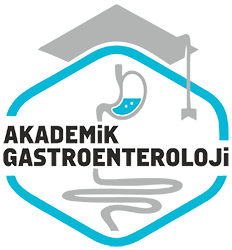Nisan 2011
Hastaneye yatirilan hastalarda poliserozit etyolojisi: 40 hastanin değerlendirilmesi
Etiology of polyserositis in hospitalized patients: Evaluation of 40 patients
- Ana Sayfa
- Sayılar
- Nisan 2011
- Hastaneye yatirilan hastalarda poliserozit etyolojisi: 40 hastanin değerlendirilmesi...
Haydarpasa Numune Egitim ve Arastirma Hastanesi, 2Gastroenteroloji Klinigi, Istanbul
Istanbul Üniversitesi, Cerrahpasa Tip Fakültesi, 3Enfeksiyon Hastaliklari Ana Bilim Dali, Istanbul
Özet
Giriş ve Amaç: Poliserozit birden fazla seröz zarin inflamasyonuna verilen addir. Poliserozite degisik hastalıklar neden olabilmektedir. Biz bu çalışmada hastaneye yatırılan ve poliserozit saptanan olgularimizi ayrintili olarak incelemeyi amaçladık. Gereç ve Yöntem: Cerrahpasa Tıp Fakültesi, Iç hastalıklari Anabilim Dali?nda 1 Ocak 2001 ve 31 Aralık 2004 tarihleri arasında yatirilarak tetkik edilen toplam 12,485 hastanın dosyaşi ayrintili şekilde incelendi. Poliserozit saptanan 40 olgu demografik, klinik ve etyolojik açidan ele alındı. Bulgular: Toplam 12,485 hastanın 40'i (%0.3) poliserozit tanısı almisti (22 kadın, 18 hasta). Bu hastalarda poliserozitin En sık nedeni 15 hasta (%37.5) ile maligniteler idi (4 hastada Non-Hodgkin Lenfoma, 2?sinde over kanseri, 2?sinde sarkom, birer hastada ise akciger, meme, mide, serviks ve endometrium kanseri, Burkitt lenfomasi, primeri bilinmeyen karacigere metastaz yapmis adenokanser ve Hepatit B ve Hepatit C zemininde gelişen hepatosellüler kanser). Ikinci En sık neden ise 9 hasta ile (%22.5) kollajen bag dokusu hastalıklari idi (7 hastada Behçet hastalığı ve 2 hastada sistemik lupus eritematozus). diğer poliserozit nedenleri ise sıklık sırasıyla tüberküloz (8 hasta, %20), idyopatik (3 hasta, %7.5) ve diğer nedenler (2 hastada portal ven trombozu, 2 hastada kronik böbrek yetmezligi ve hipotiroidi zemininde peritonit, 1 hastada konjestif kalp yetmezligi ve peritonit) idi. En sık başvuru semptomu halsizlik, En sık fizik muayene bulgusu ise ödem idi. Sonuç: Çalışmamızda poliserozitin En sık nedeni maligniteler idi. diğer nedenler ise sıklık sırasıyla bag dokusu hastalıklari, enfeksiyonlar ve idyopatik nedenler idi. Poliserozitli bir hasta ile karsilasildiginda bu bulgular isiginda değerlendirmenin yararli olacagini düsünmekteyiz.
Abstract
Background and aims: Polyserositis is defined as inflammation of more than one serous membrane. In this retrospective study, we aimed to investigate the patients diagnosed with polyserositis who were hospitalized. Materials and Methods: Between 1 January 2001 and 31 December 2004, 12,485 patients were hospitalized in the Internal Medicine Services of Istanbul University, Cerrahpasa Medical Faculty. Forty patients with polyserositis were determined, and these patients were carefully examined with respect to demographic, clinical and etiologic characteristics. Results: Totally, 40 (22 female, 18 male) of 12,485 patients were diagnosed with polyserositis (0.3%). The most frequent etiology of polyserositis was malignancy (15 patients) (4 patients were diagnosed with non-Hodgkin lymphoma, 2 with ovarian cancer, 2 with sarcoma, and 1 patient each with lung, breast, gastric, cervical, endometrial cancer, Burkitt?s lymphoma, metastatic adenocarcinoma to the liver of unknown primary origin and hepatocellular cancer developed from liver cirrhosis due to chronic hepatitis B and C). The second most frequent cause of polyserositis was collagen vascular disease, determined in 9 patients (22.5%) (7 with Behçet?s disease, 2 with systemic lupus erythematosus). The other etiologies of polyserositis in order of frequency were tuberculosis (8 patients), idiopathic (3 patients) and other (2 with portal venous thrombosis, 2 with peritonitis with background of chronic renal failure and hypothyroid and 1 with peritonitis with background of congestive heart failure). The most frequent presenting symptom was malaise and the most frequent finding was edema. Conclusions: The most frequent etiology of polyserositis in our study was malignancy. The other causes were collagen vascular diseases, infections and idiopathic causes. We suggest that it will be useful to evaluate patients with polyserositis in light of these data.



